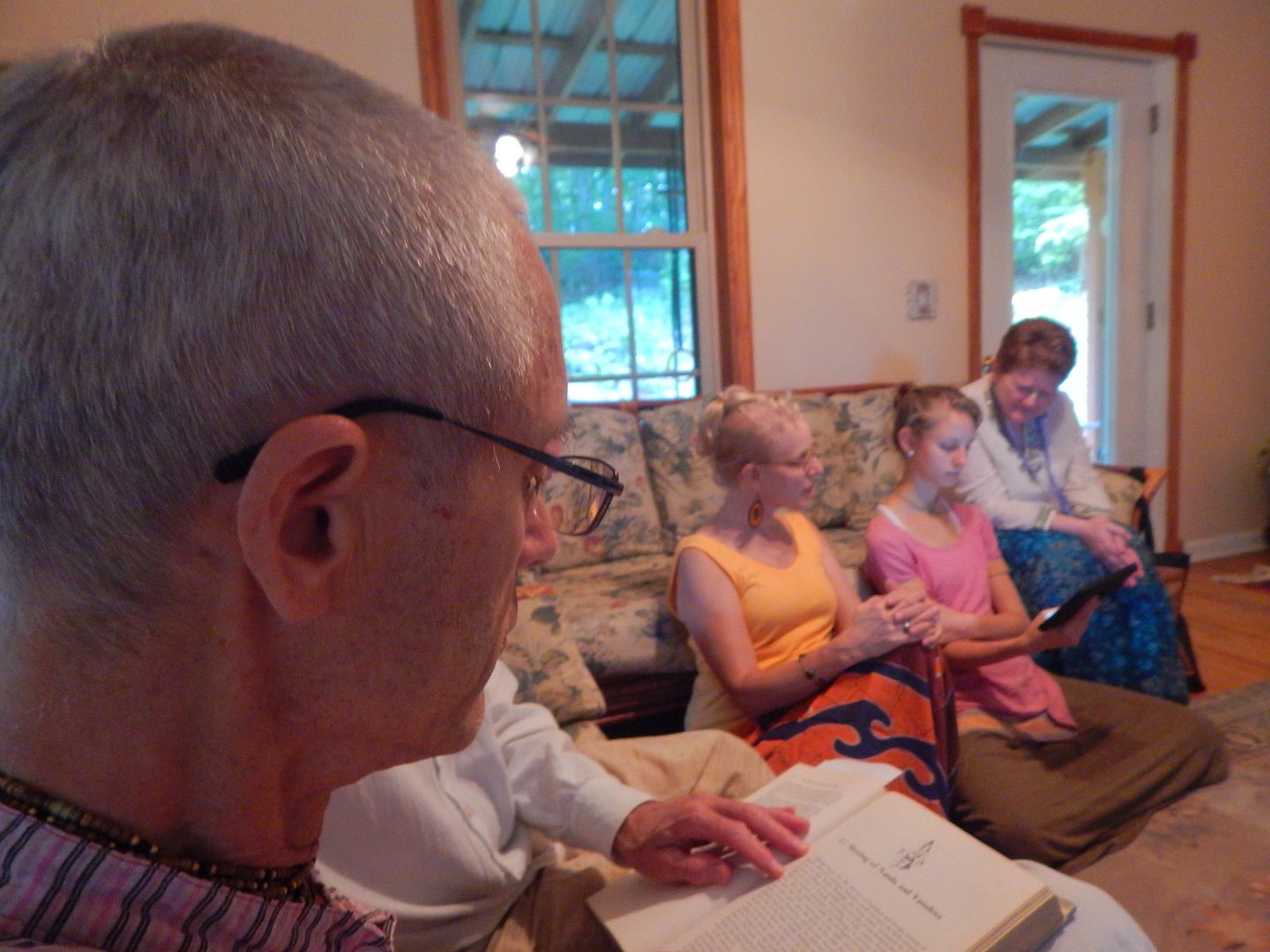Srila Prabhupada and ISKCON after Fifty Years
 Srila Prabhupada’s disciple Dhananjaya Dasa told me that at his initiation Srila Prabhupada said, “Dhananjaya means ‘winner of wealth,’” and added, moving his arms all around, “Money is flying in all directions—you simply have to learn the art of catching it.”
Srila Prabhupada’s disciple Dhananjaya Dasa told me that at his initiation Srila Prabhupada said, “Dhananjaya means ‘winner of wealth,’” and added, moving his arms all around, “Money is flying in all directions—you simply have to learn the art of catching it.”
The next morning, Dhananjaya raised a question related to a purport he had read in Prabhupada’s Srimad-Bhagavatam (1.12.33):
“Maharaja Marutta: . . . [He] conducted one sacrifice called Sankara-yajna by which the Lord was so satisfied that He was pleased to hand over to him the charge of a mountain peak of gold. This peak of gold is somewhere in the Himalaya Mountains, and modern adventurers may try to find it there.”
“Srila Prabhupada,” Dhananjaya asked, “Is it true that there is mountain peak in the Himalayas made of solid gold?”
“Yes, there is such a peak.”
“Do you know where it is?”
“Why do you want to know?” Prabhupada asked.
Dhananjaya perceived that ISKCON was not doing well financially, and so he said, “Well, if you tell me where it is, I’ll get a rucksack [back pack] and a special hammer and chisel and go to the top of that mountain, hack away at the gold, fill up the rucksack, and come down, and then we can use that gold in Krsna’s service. So would you let me know where that mountain peak is?”
“No,” Prabhupada replied.
“Why not?” Dhananjaya asked.
“That would become too controversial,” Prabhupada said. Then he added, “Actually, more valuable than gold are devotees. You should make devotees.”
Dhananjaya took that instruction to heart and has always tried to make devotees—and along with making devotees, keeping devotees. Naturally, if we gain some wealth, we don’t want to lose it—we want to preserve it and increase it.
As Srila Prabhupada wrote, “It is better to maintain a devotee than to try to convince others to become devotees. It is the duty of the GBC to maintain the devotees, keep them in the highest standard of Krishna consciousness, and give them all good instruction, and let them go out and preach for making more devotees. Your first job should be to make sure that every one of the devotees in your zone of management is reading regularly our literatures and discussing the subject matter seriously from different angles of seeing, and that they are somehow or other absorbing the knowledge of Krishna consciousness philosophy. If they are fully educated in our philosophy and if they can get all of the knowledge and study it from every viewpoint, then very easily they will perform tapasya, or renunciation, and that will be their advancement in Krishna consciousness. So first thing is to instruct all of your temple presidents and the other devotees to read daily, just as we have done in our morning class in Los Angeles . . . reading one sloka each morning in Sanskrit and reciting it all together and then discussing it thoroughly by seeing different new things. So you introduce this system and train the devotees first. Don’t be too much concerned for the time being with nondevotees. Now we must fix up what devotees we have got in the knowledge of Krishna consciousness; then we will succeed. What good are many, many devotees if none of them are knowledgeable?” (Letter to Satsvarupa, June 16, 1972)
In a similar vein, Srila Prabhupada wrote, “So I want you leaders especially to become very much absorbed in the philosophy of Bhagavad-gita, Srimad-Bhagavatam, and become yourselves completely convinced and free from all doubt. On this platform you shall be able to carry on the work satisfactorily, but if there is lack of knowledge, or if there is forgetfulness, everything will be spoiled in time. So especially you must encourage the students to read our books throughout the day as much as possible, and give them all good advice how to understand the books, and inspire them to study the things from every point of view. In this way, by constantly engaging our tongues in the service of the Lord, either by discussing His philosophy or by chanting Hare Krishna, the truth is that Krishna Himself will reveal Himself to us and we shall understand how to do everything properly. Now we have got so many students and so many temples, but I am fearful that if we expand too much in this way we shall become weakened and gradually the whole thing will become lost. Just like milk. We may thin it more and more with water for cheating the customer, but in the end it will cease to be any longer milk. Better to boil the milk now very vigorously and make it thick and sweet, that is the best process. So let us concentrate on training our devotees very thoroughly in the knowledge of Krishna consciousness from our books, from tapes, by discussing always, and in so many ways instruct them in the right propositions.” (Letter to Hansaduta, June 22, 1972)
Srila Prabhupada has a disciple named Tusta Krsna Dasa, who had been a follower of Sai in Hawaii and had joined ISKCON when Sai, along with other followers, had come to surrender to Srila Prabhupada. Prabhupada initiated Sai as Siddhasvarupa Dasa, and Tusta Krsna eventually came to serve in Bombay, where he met and engaged with Mr. Nair, who eventually tried to cheat Srila Prabhupada and committed many grievous offenses against him, the Deities Sri Sri Radha-Rasabihari, and the devotees. In response to a letter from Tusta Krsna, Prabhupada wrote,
“Your next question, after leaving this material realm does the devotee remain forever with his spiritual master? The answer is yes. But I think you have got some mistaken idea in this connection. You speak of pure devotee, that he is saktyavesa avatara, that we should obey him only—these things are the wrong idea. If anyone thinks like that, that a pure devotee should be obeyed and no one else, that means he is a nonsense. We advise everyone to address one another as Prabhu. Prabhu means master, so how the master should be disobeyed? Others, they are also pure devotees. All of my disciples are pure devotees. Anyone sincerely serving the spiritual master is a pure devotee; it may be Siddhasvarupa or others, a-Siddhasvarupa [the Sanskrit prefix a means “not”]. This must be very clearly stated. It is not that only your Siddhasvarupa is a pure devotee and not others. Do not try to make a faction. Siddhasvarupa is a good soul. But others should not be misled. Anyone who is surrendered to the spiritual master is a pure devotee—it doesn’t matter if Siddhasvarupa or non-Siddhasvarupa. Amongst ourselves one should respect others as Prabhu, master—one another. As soon as we distinguish here is a pure devotee, here is a non-pure devotee, that means I am a nonsense. Why you only want to be in the spiritual sky with Siddhasvarupa? Why not all? If Siddhasvarupa can go, why not everyone? Siddhasvarupa will go, you will go, Syamasundara will go, all others will go. We will have another ISKCON there. Of course, Mr. Nair must stay.” (Letter to Tusta Krsna, December 14, 1972)
Another ISKCON in the spiritual sky—what would that be like? The supreme spiritual planet has different sections. In one, Sri Krsna Caitanya’s pastimes are taking place, and in another, Lord Krsna’s pastimes. “This Krsna consciousness movement is for approaching Radha-Krsna,” Srila Prabhupada said, “to be associated with the Supreme Lord in His sublime pleasure dance. That is the aim of Krsna consciousness, . . . to enter into the dancing party of Radha-Krsna.” (Lecture on the song Nitai-Pada-Kamala, December 21, 1968, Los Angeles)
In his letter to Tusta Krsna, after saying that we will have another ISKCON in the spiritual sky, Srila Prabhupada added, “And if somebody does not go, then I shall have to come back to take him there.” In other words, every one of Srila Prabhupada’s followers is meant to meet him in the spiritual sky and serve him eternally; and when we do meet him, we’ll find that his other followers are also there, and thus our relationships with one another are also eternal, through Srila Prabhupada.
Later, another of Srila Prabhupada’s disciples, Upendra Dasa wrote him, “There are times when I take all my relationships within ISKCON and the pleasures and difficulties as something like a dream only. I am reminded of the time you explained to me that there is no reality in this world save and except the Divine Name and service to Him. In the Srimad-Bhagavatam I have also read that all this having to do with past, present, and future is a dream only. I am understanding, ‘Yes, even these relations as my wife, my children, or my friends or close godbrothers in Krsna consciousness, ISKCON, are like sticks meeting in a stream, to be separated in time, but with the same end of krsna-bhakti, back to home, or the ocean—that they are still part of these past, present, and future of the measuring temperament, though the devotional service and sentiments therein are eternally developing or lasting.’ It was raised that ‘No, our relationships formed here in ISKCON with one another are eternal in themselves in addition to the service, that ISKCON and we members as we are known now shall be known there.’ All this I was unable to support scripturally, and lest I make an offense and direct error, I place this before you.”
Srila Prabhupada replied, “As to your question concerning whether relationships between devotees are eternal, the answer is ‘yes.’ This is confirmed by Sri Narottama dasa Thakura: cakhu-dan dilo yei, janme janme prabhu sei—‘He is my lord birth after birth.’ In this way you have to understand, by studying carefully the philosophy.” (Letter to Upendra, January 7, 1976)
Once, at the opening of a bank, Srila Prabhupada quoted the saying that “money attracts money,” that wealth attracts wealth, but where did the original wealth, the devotees in ISKCON, come from initially?
Sri Caitanya-caritamrta (Antya 2.6) explains the mood and method of Sri Caitanya Mahaprabhu: ‘loka nistariba’—ei isvara-svabhava: “‘I shall deliver the fallen souls.’ This statement characterizes the Supreme Personality of Godhead.” A few verses later (Antya 2.13–14), we find a description of His method for delivering people who could not meet Him personally:
ta-saba tarite prabhu sei saba dese
yogya-bhakta jiva-dehe karena ‘avese’
ei jive nija-bhakti karena prakase
tahara darsane ‘vaisnava’ haya sarva-dese
“To deliver people in regions throughout the universe who could not meet Him, Sri Caitanya Mahaprabhu personally entered the bodies of pure devotees. Thus He empowered living beings (His pure devotees) by manifesting in them so much of His own devotion that people in all other countries became devotees by seeing them.”
This passage describes how Lord Caitanya empowered Srila Prabhupada, who elaborates on this principle in his purport:
“As stated in the Caitanya-caritamrta (Antya 7.11):
kali-kalera dharma—krsna-nama-sankirtana
krsna-sakti vina nahe tara pravartana
Unless one is empowered by the Supreme Personality of Godhead, Sri Caitanya Mahaprabhu, one cannot spread the holy names of the Hare Krsna maha-mantra throughout the world. Persons who do so are empowered. Therefore they are sometimes called avesa-avataras, or empowered incarnations, for they are endowed with the power of Sri Caitanya Mahaprabhu.”
The first devotees in ISKCON were inspired and engaged by Srila Prabhupada—or by Sri Caitanya Mahaprabhu through Srila Prabhupada. And following Caitanya Mahaprabhu, Prabhupada manifested the same mood: loka nistariba—“I shall deliver the fallen souls.”
In our line, in ISKCON, we are meant to receive mercy and to distribute it, to taste Krsna consciousness and to share it with others—by the grace of Sri Sri Guru and Gauranga.
To distribute the mercy and message of Sri Caitanya Mahaprabhu, Srila Prabhupada translated many books, with full faith in his spiritual master—Srila Bhaktisiddhanta Sarasvati Thakura—and Sriman Mahaprabhu. He wrote,
“It is to be admitted that whatever translation work I have done is through the inspiration of my spiritual master, because personally I am most insignificant and incompetent to do this materially impossible work. I do not think myself a very learned scholar, but I have full faith in the service of my spiritual master, His Divine Grace Srila Bhaktisiddhanta Sarasvati Thakura. If there is any credit to my activities of translating, it is all due to His Divine Grace. . . . He was very fond of seeing many books published to spread the Krsna consciousness movement. Therefore our society, the International Society for Krishna Consciousness, has been formed to execute the order of Sri Caitanya Mahaprabhu and His Divine Grace Srila Bhaktisiddhanta Sarasvati Thakura.” (Caitanya-caritamrta, Concluding Words)
In 1971, one of our early life members in Calcutta, Shyamsunder Maheshwari, approached Srila Prabhupada when I happened to be in the room. He said, “So many spiritual organizations begin well, in the presence of the founder, but after the founder dies, the institutions break apart because the followers fight over the material assets of the institution. What will happen to ISKCON after you leave?”
Srila Prabhupada replied, “That will not happen in ISKCON, because these American and European boys and girls have had enough of material opulence and enjoyment, from before they came to Krsna consciousness. In fact, they have given up their material wealth and facilities to join ISKCON, so they will not fight over these things.”
In 1973, Srila Prabhupada was invited to be guest of honor at a series of lectures and discussions to be held at the Bharatiya Vidya Bhavan in Girgaum Chowpatty, South Bombay, on the subject of how the Bhagavad-gita could solve the world’s problems. The president of Bharatiya Vidya Bhavan, Lilavati Munshi, was eager to meet Prabhupada, and she extended a personal invitation for him to join her for tea in the library of her quarters, also in the Bhavan building, just before the conference. And so Srila Prabhupada, accompanied by Syamasundara, Srutakirti, and me, went to meet Mrs. Munshi.
Several other conference presenters—sadhus, swamis, and political figures—and other important persons were also there to meet Srila Prabhupada, but even within this group of esteemed leaders, everyone accepted Prabhupada as the leader.
As soon as Prabhupada was seated, everyone started praising him for the wonderful work he had done in spreading Indian culture throughout the world. Mrs. Munshi in particular was astonished by Prabhupada’s success. “How did you do it?” she kept asking. “How did you get them to shave their heads? How did you get them to wear dhotis and kurtas and tilaka? How did you get the girls to wear saris?” Prabhupada explained that although there had been many editions of the Bhagavad-gita, it had not been presented “as it is” and there had not been any programs to train students to follow its principles. Although there were so many branches and institutions of Bharatiya Vidya Bhavan—both within and outside India—and although they were disseminating books, there was no program for training young men and women to become followers of Vedic culture. Books were required, and training was also required. And he had given both.
Then Mrs. Munshi brought up a point that was on many people’s minds. “Quite often when the founder of a mission is present,” she said, “the mission is very successful—it’s flourishes and prospers—but after the founder leaves, things deteriorate. So what will be the future of your movement after you go?”
“The future of my mission is very bright,” Srila Prabhupada replied, “as long as my disciples follow my instructions. Just like Gandhi—he had so many programs, but after he left, his followers changed everything. He wanted village organization, he wanted the economy to be based on agriculture, and after he left, Nehru and others changed the whole program. They wanted to industrialize India and imitate the West. So, he had his program, but after he left his so-called followers changed everything and everything became spoiled. So in the same way, if I leave and my followers change what I’ve given, what can I do?” By saying this, he challenged us, his followers, with the responsibility of remaining faithful to his instructions.
Krsna consciousness, or bhakti-yoga, begins—and progresses—with faith (adau sraddha). This sraddha, faith and attraction, matures and intensifies into prema, pure love of Godhead, and ultimately maha-bhava, the most exalted stage of ecstatic love for Krsna.
ISKCON is built on the foundation of Srila Prabhupada’s faith in his guru maharaja and Krsna:
yasya deve para bhaktir
yatha deve tatha gurau
tasyaite kathita hy arthah
prakasante mahatmanah
“Only unto those great souls who have implicit faith in both the Lord and the spiritual master are all the imports of Vedic knowledge automatically revealed.” (Svetasvatara Upanisad 6.23)
Srila Prabhupada’s faith in his spiritual master and Sri Caitanya Mahaprabhu is manifest in every aspect of ISKCON and is the cause of its success. He wrote, “We took up the mission of Bhaktisiddhanta Sarasvati Thakura and Bhaktivinoda Thakura to preach the cult of Caitanya Mahaprabhu all over the world, under the protection of all the predecessor acaryas, and we find that our humble attempt has been successful. . . . ‘To one who has staunch faith in the words of the spiritual master and the words of the Supreme Personality of Godhead the secret of success in Vedic knowledge is revealed.’ The Krsna consciousness movement is being propagated according to this principle, and therefore our preaching work is going on successfully, in spite of the many impediments offered by antagonistic demons, because we are getting positive help from our previous acaryas. . . . The success of the ISKCON party, the International Society for Krishna Consciousness, which strictly follows guru and Gauranga, is increasing daily all over the world. Srila Bhaktisiddhanta Sarasvati Thakura wanted to print as many books as possible and distribute them all over the world. We have tried our best in this connection, and we are getting results beyond our expectations.” (Caitanya-caritamrta, Adi 12.8 purport)
And in his last year with us, Srila Prabhupada explained, “Now, I’ll say from my practical life . . . It is not pride. Actually everyone knows that my guru maharaja had thousands of disciples. So out of thousands of disciples, practically I am a little successful. That everyone knows. Why? Because I firmly believed in the words of my guru. That’s all. There may be many other godbrothers, maybe very learned and very advanced, favored, whatever it may be. . . . So I think sometimes that ‘Why this wonderful thing has happened to me?’ So I search out. I search out only that I cent percent believe in the words of my spiritual master. That’s all, nothing else. Guru-mukha-padma-vakya, cittete koriya aikya, ara na koriho mane asa. Don’t think any nonsense. Simply execute what your guru has said. That is success.” (Conversation, Bhubaneswar, January 28, 1977)
Faith in Srila Prabhupada and his line is our greatest treasure. If we lose that, then everything is lost. In the same conversation in Bhubaneswar, a disciple gave the translation of guru-mukha-padma-vakya, cittete koriya aikya—“My only wish is to have my consciousness purified by the words emanating from his lotus mouth”—and Prabhupada responded, “Then he’s safe. And as soon as he manufactures—finished. So don’t do it. Yasya deve para bhaktir yatha deve tatha gurau, tasyaite kathita. This is the secret of spiritual success.”
I can only pray to develop such faith, and to remain in the association of devotees who have that faith, whether in this realm or that, in ISKCON here or in the spiritual world.
Hare Krsna.
Srila Prabhupada’s aspiring servant eternally,
Giriraj Swami
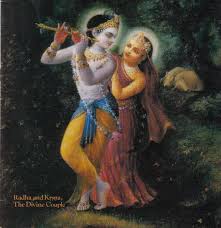
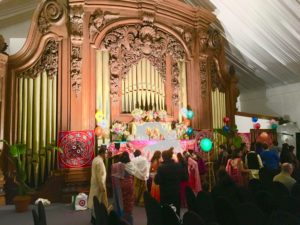
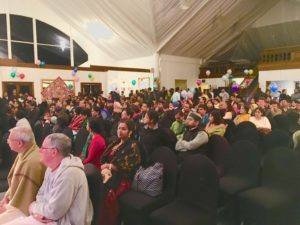
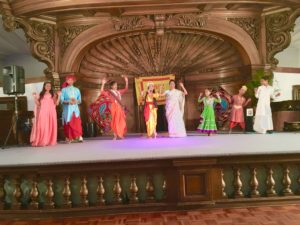

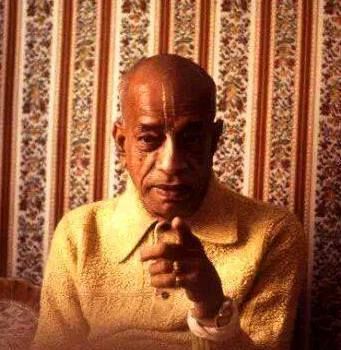

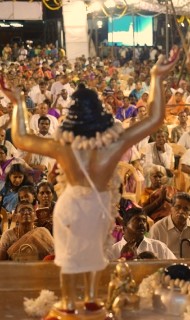 By Krishna das
By Krishna das By ISKCON Delhi
By ISKCON Delhi By Filmwork Studios
By Filmwork Studios

 The king could not speak, so the boy continued. “Let me answer your question. We have carefully examined all the śāstra and reached a definite conclusion: the true cause of relief from suffering is to lose attachment to a self-concept that has nothing to do with the true self, and to fall solidly and strongly in love with the conscious entity who is beyond all conventional qualifications.”
The king could not speak, so the boy continued. “Let me answer your question. We have carefully examined all the śāstra and reached a definite conclusion: the true cause of relief from suffering is to lose attachment to a self-concept that has nothing to do with the true self, and to fall solidly and strongly in love with the conscious entity who is beyond all conventional qualifications.”





 By Indradyumna Swami
By Indradyumna Swami By Arya Devi Dasi
By Arya Devi Dasi
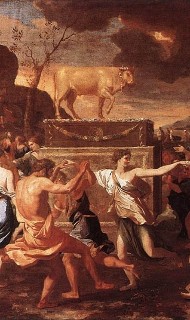 By Kesava Krsna Dasa
By Kesava Krsna Dasa